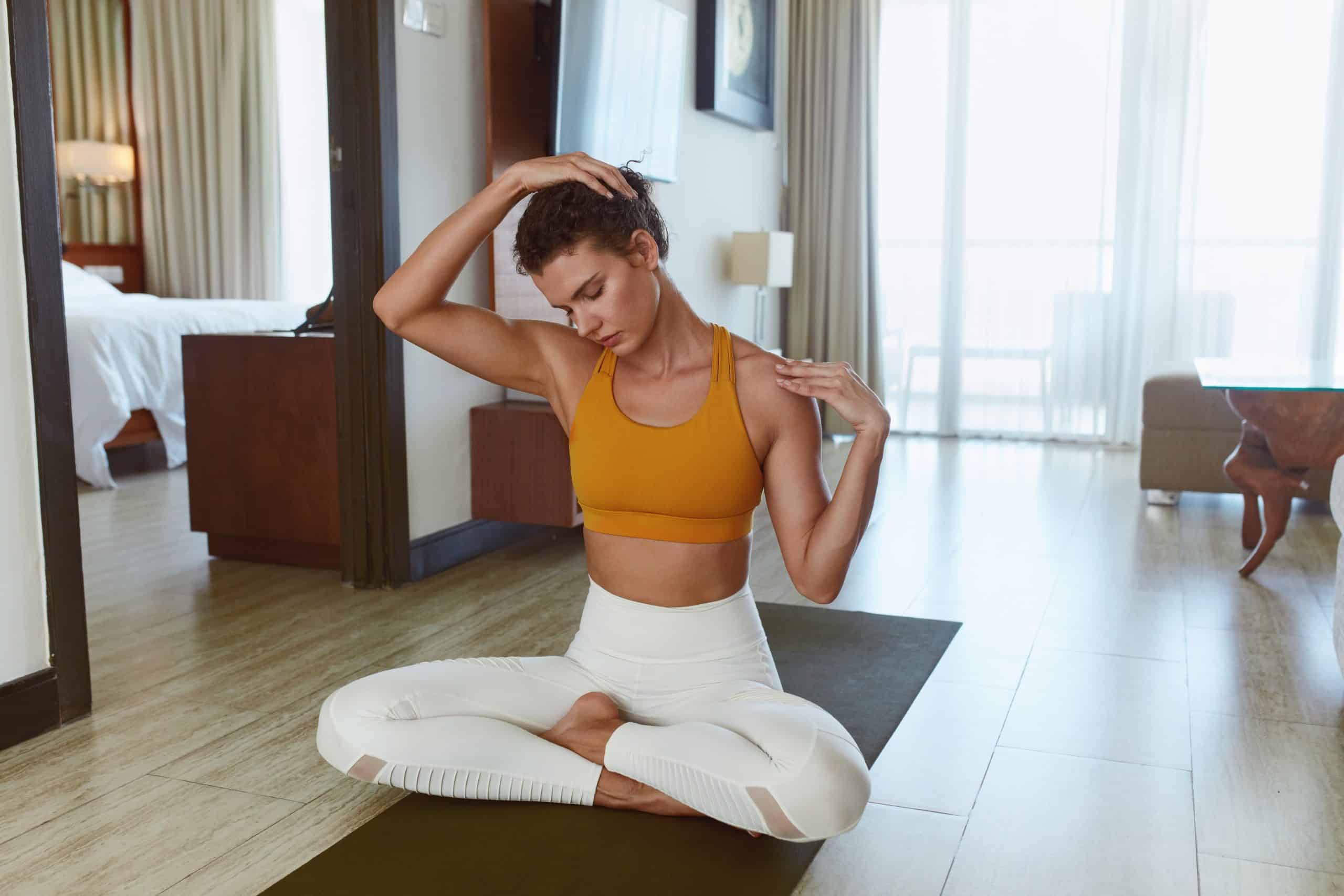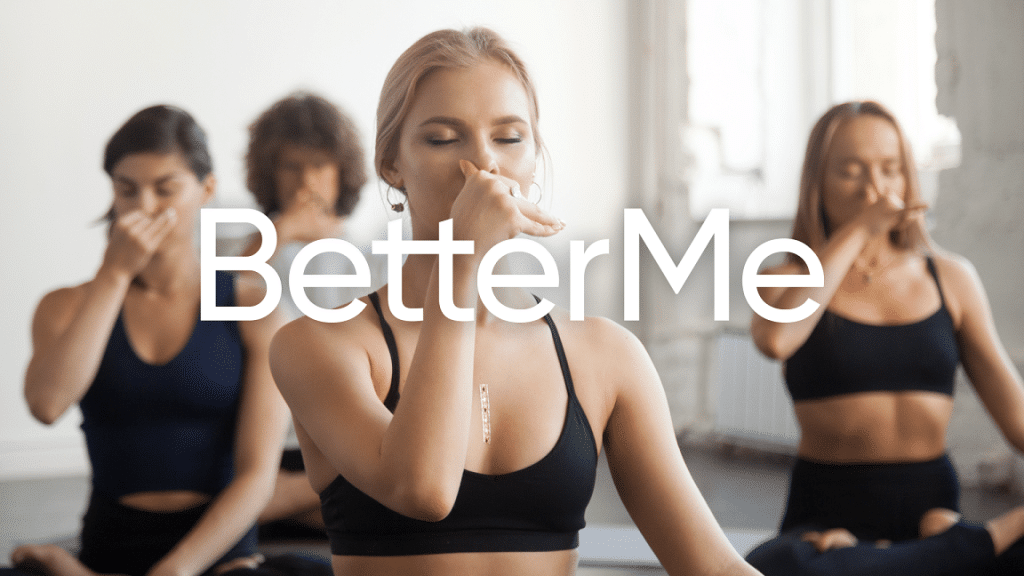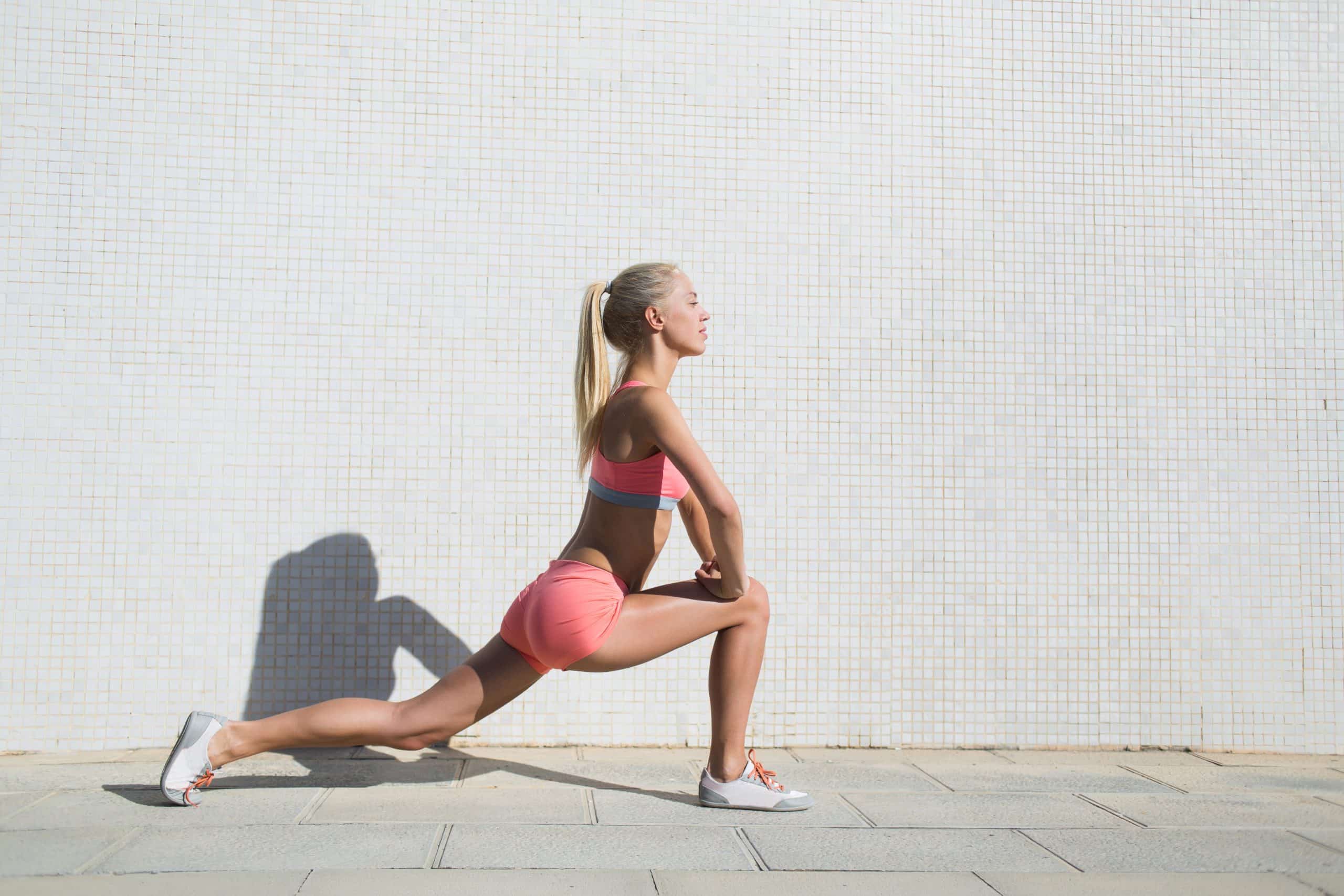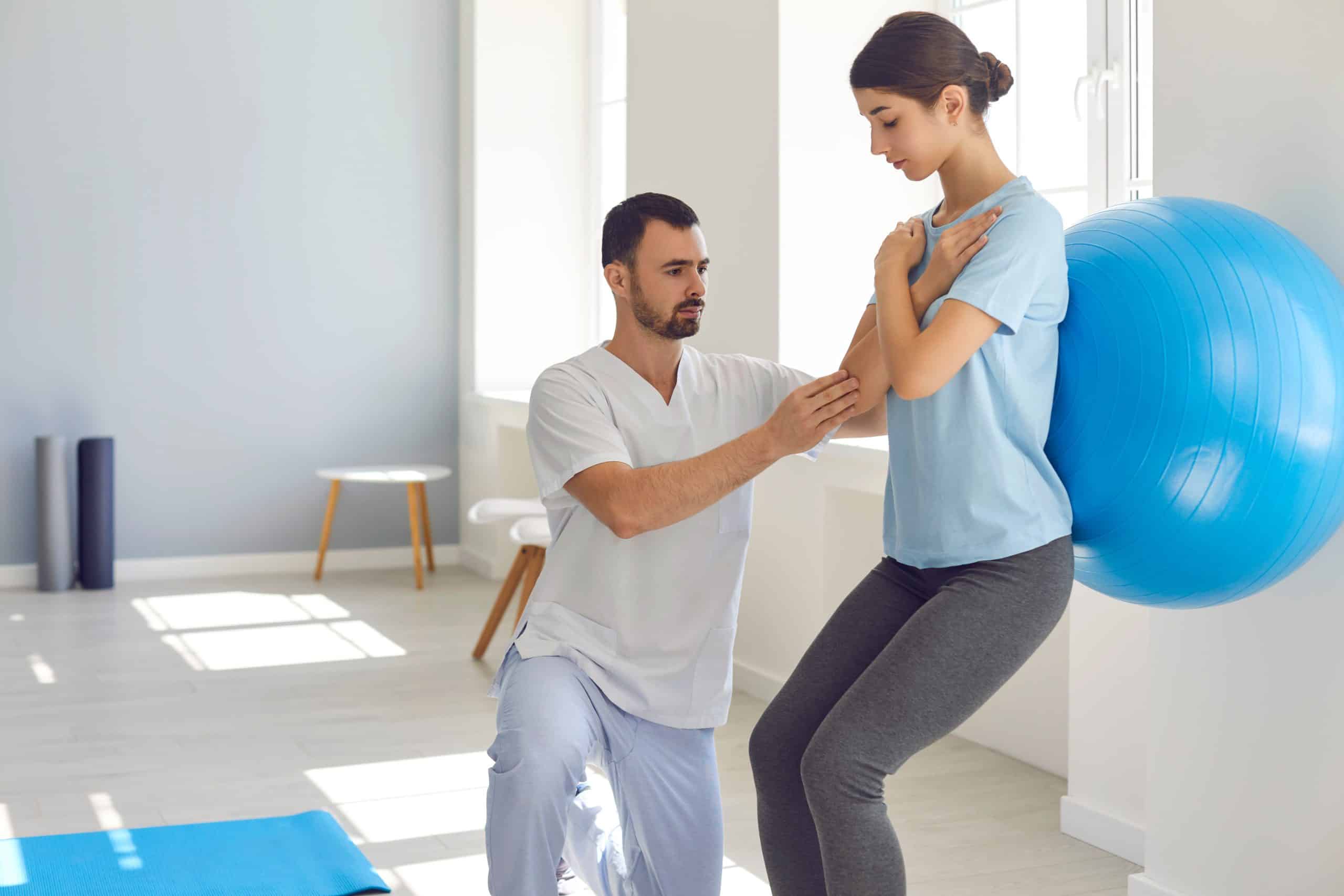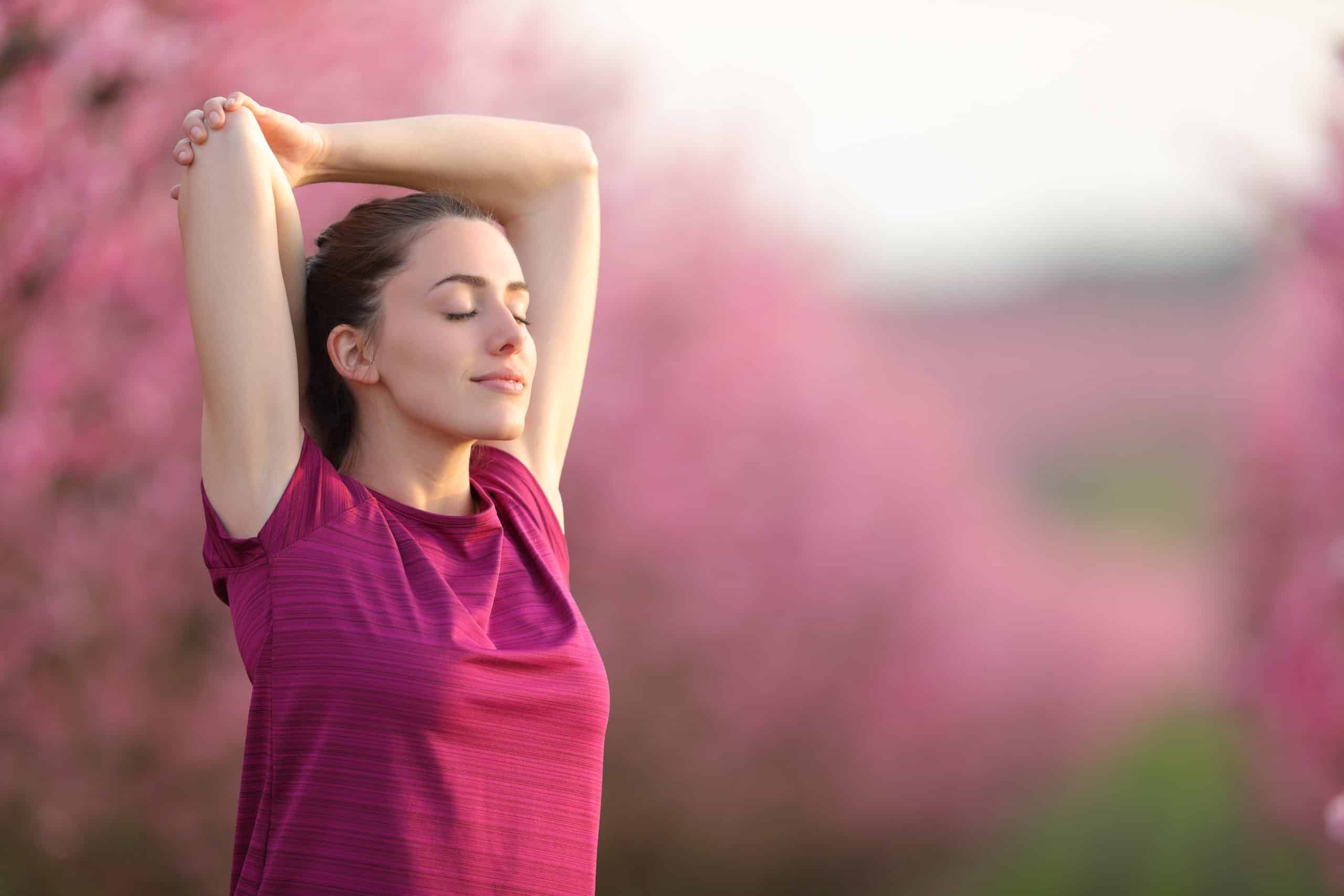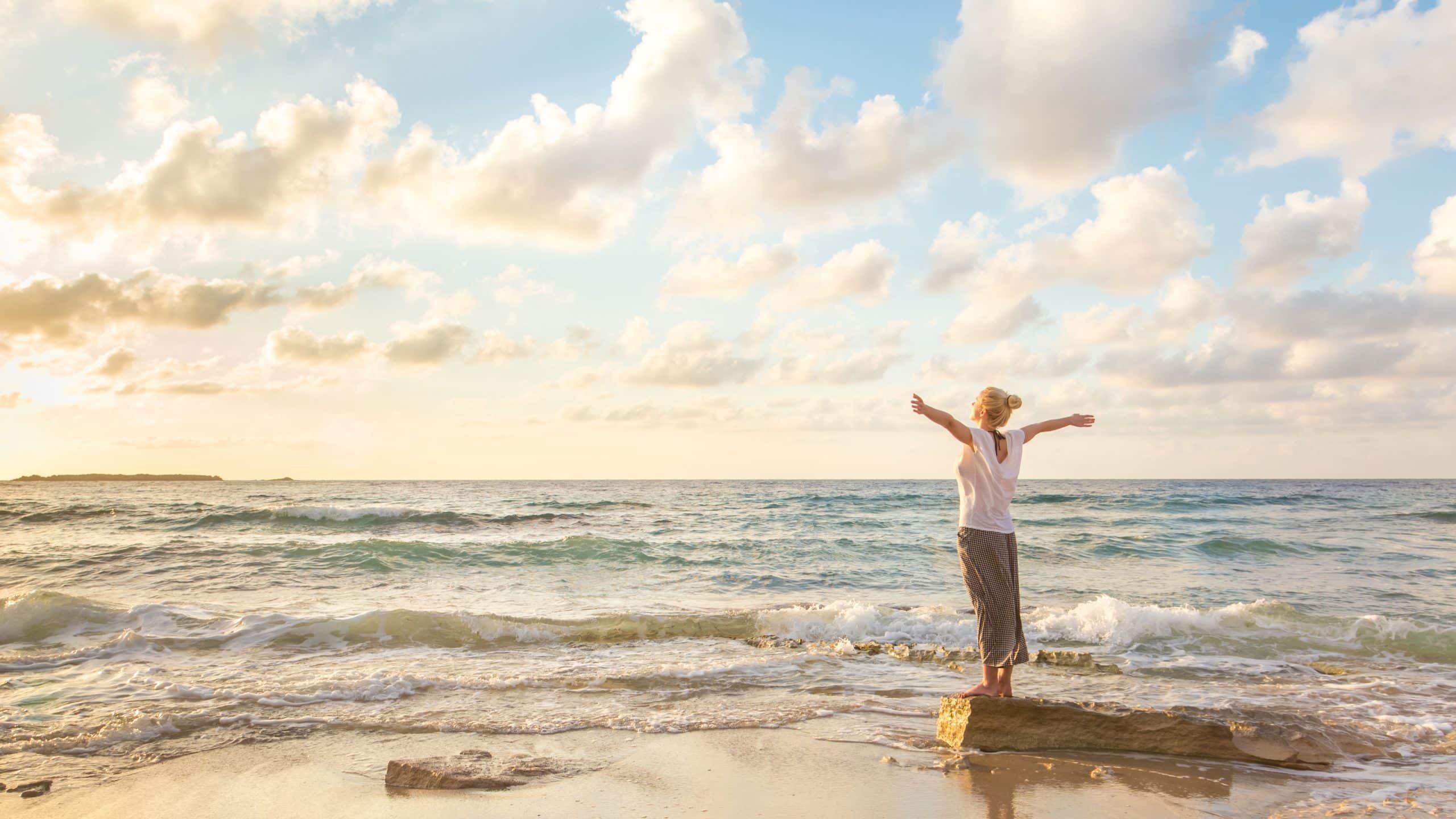Do you have a headache that just won’t go away? Are the painkillers and home remedies not doing the trick? It may be time to try something different.
Headaches can be caused by many things, from stress to dehydration or even an underlying medical condition. But one thing is for sure: no matter what’s causing your headache, finding relief is the top priority.
Fortunately, there are natural ways to reduce your headache pain without resorting to medication or other invasive treatments. You may want to consider a technique known as pressure point therapy.
Pressure point therapy is a type of massage that targets specific areas of your body to reduce stress, promote relaxation and relieve pain. In particular, it can be used to help ease the symptoms of headaches by targeting certain pressure points found in the head, neck, or shoulders (11).
Let’s explore where these pressure points are located, the correct way to stimulate them, and how to use them to reduce your headache pain.
How Do Pressure Points Work for Headaches?
Pressure points for headaches, or any type of pain relief, work on the principles of reflexology.
Reflexology is a holistic healing technique that has been used in traditional medical practices for centuries. It is based on the principle of applying pressure to specific areas of the feet, hands and ears that are believed to correspond to specific organs and systems in the body (10).
When pressure is applied to these reflex points, it is thought to stimulate the body’s natural healing process and improve overall well-being.
Reflexology can be used as a treatment for various conditions such as headaches, stress, insomnia and even digestive issues. It is a non-invasive method of treatment that has no known side effects (10).
The origins of reflexology can be traced back to ancient Egyptian, Chinese and Indian cultures.
When the technique first came to the West in the early 1900s, it was known as “zone therapy”. It wasn’t until the mid-1930s when two American physicians, Dr. William Fitzgerald and Eunice Ingham, developed the modern version of reflexology which they called “reflex zone therapy”.
Research on the efficacy of reflexology is still limited, with most studies showing mixed results. However, many people who have experienced the benefits of reflexology often report feeling relieving effects.
Since reflexology is a safe and non-invasive technique, it can be used as an alternative or complementary treatment to conventional medicine.
How to Find Pressure Points for Headaches
At first glance, it may seem difficult to locate the pressure points for headache relief. But once you understand where they are, it’s actually quite simple.
We’ve divided the pressure points into five main categories based on the area of your body they are found in; the feet, hands, ears, neck, and shoulders.
Read More: Pain Relief Without A Pill: All About Acupressure Mats And How They Work
Pressure Points for Headaches on Feet
An unlikely area to target for symptomatic relief of headaches may be the feet. There are several reflex points located in this area that are believed to help reduce pain:
Moving Point/LV2/Xingjian
This point is located on the top of your foot, in between the big toe and the second toe. Applying pressure to this spot is believed to alleviate pain from both headaches and migraines (2).
Great Surge/LV3/Tai Chong
This point is also located in between the big and second toe but further down by 1-2 inches. Applying pressure to this area is believed to relieve headaches, ease anxiety and improve sleep quality (2).
Above Tears/GB41/Zulinqi
This point is located between the fourth and fifth toes, slightly away from the webbing. It is believed to be effective in relieving headaches and reducing migraine frequency (5).
Pressure Points for Headaches on Hands
The hands are another area where pressure points may be found for headache relief.
Union Valley/L14/Hegu
This point is located on the back of your hand, in between the thumb and index finger. Stimulating this pressure point is believed to help relieve headaches and neck stiffness (10).
Triple Energizer 3/TE3/Zhong Zhu
This point is located between the pinky and ring finger, where the knuckles meet. Stimulating this area is believed to help reduce sinus headaches and facial pain (6).
Inner Gate/P6/Neiguan
This point is located on the inner arm, three finger widths away from the wrist crease. Applying pressure to this area is believed to help reduce headaches, nausea, and vomiting (6).
Pressure Points for Headaches on Ears
The ears contain many reflex points that may be targeted to help relieve headaches. Below are some ear pressure points for headache relief (7):
Ear Gate/SJ21/Ermen
This point is located on the upper part of the ear where the ear meets the head. Applying pressure to this point is believed to help reduce pain from headaches and migraines.
Ear Apex/HN6/Erjian
This point is located at the highest peak of the ear (the apex). Applying pressure to this area is believed to reduce pain from headaches and swelling around the eyes.
Daith
This point is located on the inner ear, just above the tragus. Applying pressure to this area is believed to relieve pain from migraines.
If you wish to cinch your waist, tone up your bat wings, blast away the muffin top – our fitness app was created to cater to all your needs! BetterMe won’t give excess weight a chance!
Pressure Points for Headaches on Neck
The neck is one of the most common areas where tension headaches can be felt. Below are some pressure points that may help relieve neck tension (3):
Wind Pool/Gates of Consciousness/GB20/Fengchi
This point is located on the back of your neck, in between the base of your skull and your shoulders. Applying pressure to this area is believed to help reduce tension headaches and neck stiffness.
Great Hammer/GV14/Dazhui
This point is located at the nape of the neck, where the depression or hollow is. Stimulating this area is believed to help reduce pain from headaches and neck stiffness.
Heavenly Pillar/ Celestial Pillar/GV16/Tian Zhu
This point is located just below the base of your skull. It’s on either side of your neck, where you’d grip your neck to massage it. Applying pressure to this area is believed to help reduce pain from tension headaches.
Pressure Points for Headaches on Face and Scalp
The scalp is a sensitive area that may be targeted to help relieve headaches. Below are some pressure points that may help reduce headache pain:
Wind Mansion/GV16/Feng Fu
This point is located on the back of your skull, at the top. Stimulating this point is believed to help reduce pain from headaches, dizziness, stiff neck, and nasal congestion (1).
Hundred Convergences/GV20/Bai Hui
This point is located on the top of your head, where the skull meets the scalp. Stimulating this area is believed to help reduce pain from headaches and improve mental clarity (9).
Read More: 7 Amazing Benefits Of Yoga Massage Balls (For Mind And Body)
Third Eye/GV24.5/Yintang
This point is located between the eyebrows, the area known as the “third eye”. Applying pressure to this area is believed to help reduce pain from headaches and improve mental clarity (4).
Behind the Vertex/GV19/Hou Ding
This point is located at the top of the head, in the middle. Stimulating this point is believed to help reduce pain from headaches, vertigo, and dizziness (2).
Unyielding Space/GV18/Qian Jian
This spot is located at the back of the skull, just above the neck. Stimulating this area is believed to help reduce pain from headaches and eyestrain. It’s also believed to relieve stiff necks and blurred vision (8).
Brain’s Door/GV17/Nao Hu
This point is located at the base of the skull, near the neck. Applying pressure to this area is believed to relieve heaviness of the head, neck pain, and headaches (8).
How to Stimulate Pressure Points for Headaches
You won’t always have to see a professional to stimulate the pressure points for headaches. To effectively do it yourself, follow these general guidelines:
- Locate the pressure point (s).
- Gently massage the point (s) using your thumb or index finger in a circular motion for several minutes.
- Press firmly but gently. Do not apply too much pressure, as this could cause pain or discomfort.
- You may experience a slight tingling sensation as the pressure point is being stimulated.
- Breathe deeply and relax your body during the massage.
- Repeat the massage as necessary, without overdoing it.
- If you are still experiencing headaches or pain, seek medical advice from a healthcare professional.
Whether you’re a workout beast or just a beginner making your first foray into the world of fitness and dieting – BetterMe has a lot to offer to both newbies and experts! Install the app and experience the versatility first-hand!
Tools That May Help Stimulate Pressure Points for Headaches
If you would like to further explore the use of pressure points to relieve headaches, there are various tools that may help. Here are some of the most common tools to stimulate pressure points for headaches:
Acupressure Mat
An acupressure mat is a tool used for self-massage. It’s made of thousands of tiny, plastic spikes that press against the body when you lie down on it. It targets certain pressure points to help relieve tension, headaches, and other ailments.
Acupressure Roller
An acupressure roller is a handheld tool used to massage pressure points. It’s made of two rotating cylinders, with spikes on the inside. You roll it along your skin to stimulate pressure points and massage away tension in the body.
Acupressure Rings
Acupressure rings are small, circular devices worn on the fingers. They contain magnets and other materials that stimulate pressure points to help relieve pains and other ailments.
Acupressure Massage Balls
These balls are great for massaging pressure points. They are usually made of metal or hard plastic and can be used to massage away tension in the body.
Acupressure Slippers
Acupressure slippers have spikes or protrusions on the sole. When you walk in them, they target certain pressure points on your feet to help relieve pain and tension.
Contraindications for Pressure Point Therapy
As with any type of therapy, there are certain contraindications that should be taken into consideration before beginning a pressure point session.
It is important to consult with a qualified reflexologist or health care provider before undergoing any kind of treatment, especially if you are pregnant or have any underlying medical conditions.
In addition, some people may be more sensitive to pressure points than others. If you experience any pain or discomfort during a session, it is important to stop and let the reflexologist know. If the pressure is too intense or uncomfortable, you can always ask for a less intense massage.
Finally, it is important to note that pressure point therapy should not be used as a substitute for medical care. While this type of therapy can be helpful in reducing pain, it should not be used to diagnose or treat any medical conditions.
DISCLAIMER:
This article is intended for general informational purposes only and does not address individual circumstances. It is not a substitute for professional advice or help and should not be relied on to make decisions of any kind. Any action you take upon the information presented in this article is strictly at your own risk and responsibility!
SOURCES:
- [Clinical application regularity of Fengfu (GV 16) acupoint: research on ancient Chinese medical literature] (2015, pubmed.gov)
- Acupoints for Tension-Type Headache: A Literature Study Based on Data Mining Technology (2021, nih.gov)
- Acupuncture Headache Relief Biomarkers Confirmed (2022, healthcmi.com)
- Acupuncture or Acupressure on Yintang (EX-HN 3) for Anxiety: A Preliminary Review (2018, nih.gov)
- Acupuncture Therapy as an Evidence-Based Nonpharmacologic Strategy for Comprehensive Acute Pain Care: The Academic Consortium Pain Task Force White Paper Update (2022, nih.gov)
- Comparative efficacy of acupuncture-related therapy for migraine: A systematic review and network meta-analysis (2022, nih.gov)
- Does auriculotherapy have therapeutic effectiveness? An overview of systematic reviews (2018, sciencedirect.com)
- Effectiveness and Safety of Acupuncture for Vascular Cognitive Impairment: A Systematic Review and Meta-Analysis (2021, nih.gov)
- Locating the Acupoint Baihui (GV20) Beneath the Cerebral Cortex with MRI Reconstructed 3D Neuroimages (2011, nih.gov)
- Revisiting reflexology: Concept, evidence, current practice, and practitioner training (2015, nih.gov)
- The effectiveness of acupressure on relieving pain: a systematic review (2013, pubmed.gov)
